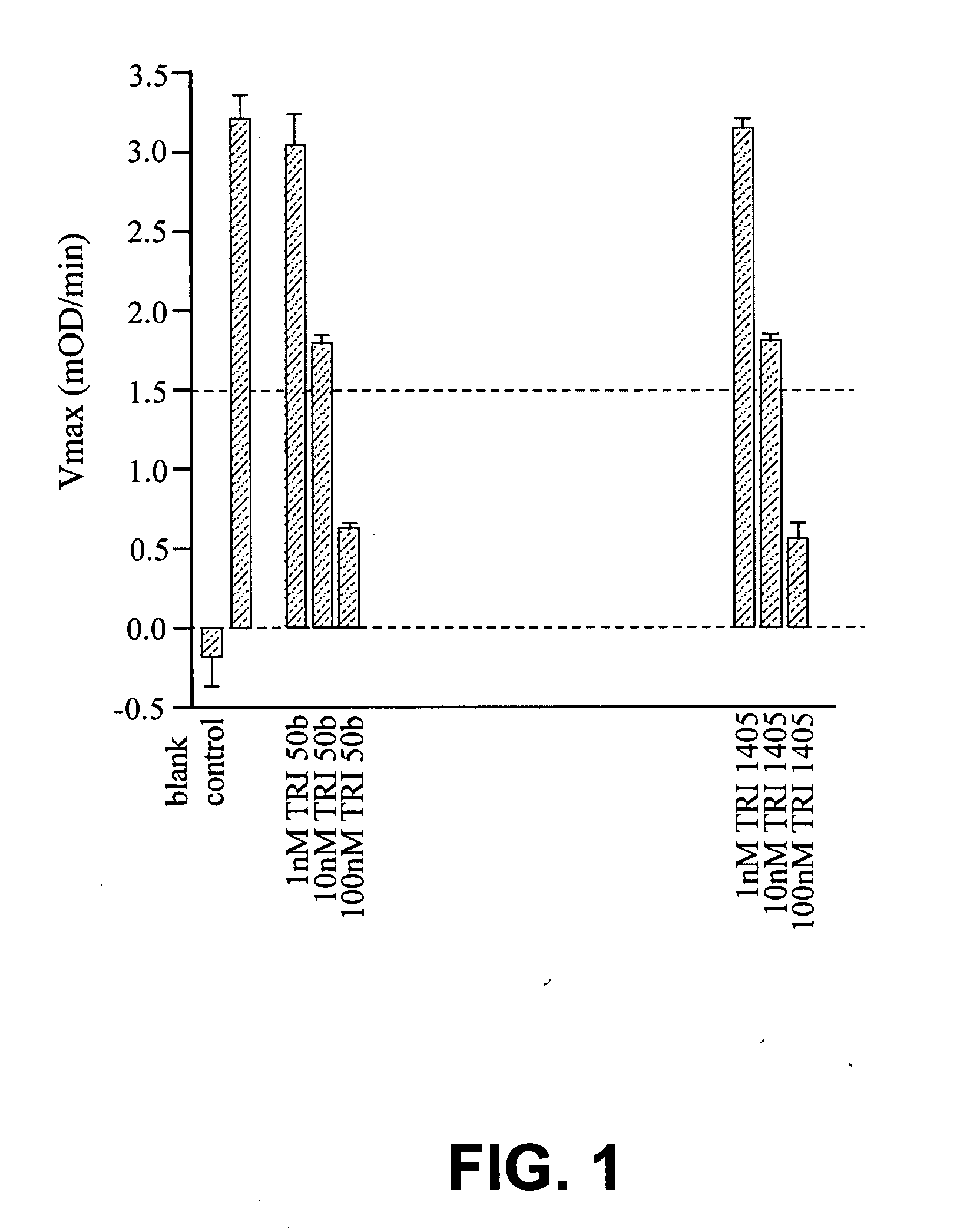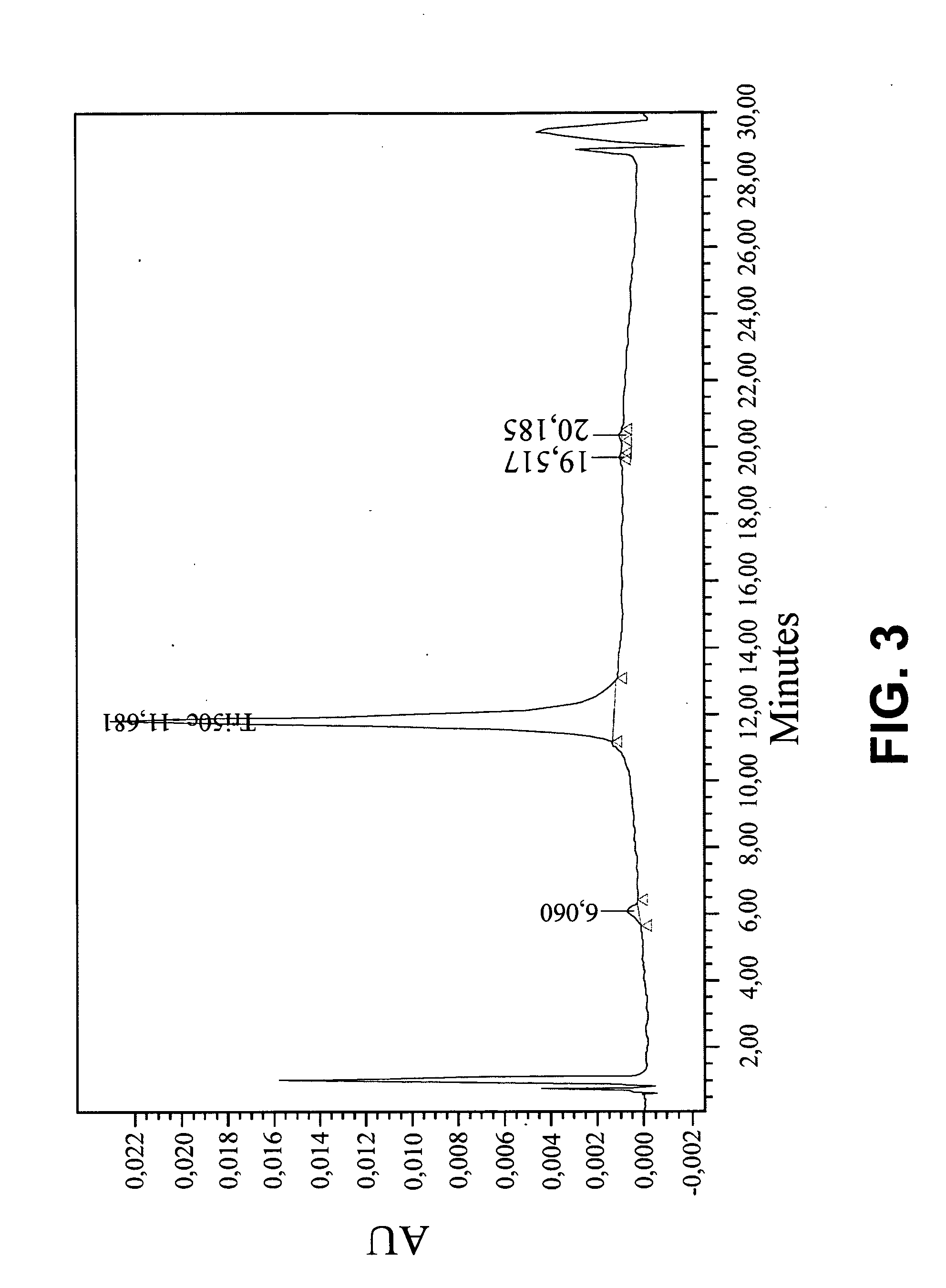Peptide boronic acid inhibitors
- Summary
- Abstract
- Description
- Claims
- Application Information
AI Technical Summary
Benefits of technology
Problems solved by technology
Method used
Image
Examples
examples 1 to 4
Introductory Remarks
Apparatus
[0617] Throughout the following procedures of Examples 1 to 4, standard laboratory glassware and, where appropriate, specialised apparatus for handling and transferring of air sensitive reagents are used.
[0618] All glassware is heated at 140-160° C. for at least 4 hours before use and then cooled either in a desiccator or by assembling hot and purging with a stream of dry nitrogen.
Solvents
[0619] The organic solvents used in the procedures of Examples 1 to 4 are all dry. Suitably, they are dried over sodium wire before use.
[0620] In the drying procedures of Example 1 to 4, products are tested for dryness (including dryness in terms of organic solvent) by observing weight loss on drying. The following procedure was followed to determine loss on drying: a sample was placed in a vacuum drier and dried at 40° C. at 100 mbar for 2 hours. Products are considered dry when the decrease in weight upon drying is less than 0.5% of the total weight o...
example 1
Synthesis of TRI 50B
Step 1: Z-DIPIN B
Procedure A
[0622] 17.8 g (732.5 mmole) magnesium turnings, 0.1 g (0.4 mmole) iodine and 127 ml dry tettahydrofuran are charged and heated to reflux. Then 15 ml of a solution of 66 g (608 mmole) 1-chloro-3-methoxypropane in 185 ml dry tetrahydrofuran are added and stirred under reflux until the vigorous reaction starts. After the initial exotherm ceases, the solution of 1-chloro-3-methoxypropane is added slowly to maintain gentle reflux until all the magnesium is consumed. After the reaction is finished, the reaction mixture is cooled to ambient temperature and slowly added to a solution of 64.4 g (620 mmole) trimethylborate in 95 ml dry tetrahydrofuran; the latter solution is cooled to below 0° C. and, if it warms up during the course of the reaction, the reaction mixture must be added to it sufficiently slowly to maintain the temperature of this solution below 65° C. Upon complete addition, the reaction mixture is allowed to warm to about 0...
example 2
Synthesis of TRI 50D (Diethanolamine Adduct of TRI 50C)
[0635] The starting material used in this Example is the solution of TRI 50b (“Z-DIPIN”) obtained in Example 1. The solution is carried forward to the synthesis of TRI 50d without further purification. The solution of Z-DIPIN in t-BME (containing 7.0 g (11.5 mmole) (R,S,R) TRI50b, calculated based on HPLC results of Z-DIPIN) is evaporated to dryness and the evaporation residue dissolved in 80 ml diethylether. 1.51 g (14.4 mmole) diethanolamine is added and the mixture heated at reflux for at least 10 hours, during which process the product precipitates. The suspension is cooled to 5-10° C., filtered and the filter residue washed with diethylether.
[0636] To improve chiral and chemical purity the wet filter cake (7 g) is dissolved in 7 ml dichloromethane, cooled to 0-5° C. and the product precipitated by addition of 42 ml diethylether and filtered. The isolated wet product is dried at 35° C. in vacuum or at least 4 hours, until ...
PUM
| Property | Measurement | Unit |
|---|---|---|
| Temperature | aaaaa | aaaaa |
| Time | aaaaa | aaaaa |
| Temperature | aaaaa | aaaaa |
Abstract
Description
Claims
Application Information
 Login to View More
Login to View More - R&D
- Intellectual Property
- Life Sciences
- Materials
- Tech Scout
- Unparalleled Data Quality
- Higher Quality Content
- 60% Fewer Hallucinations
Browse by: Latest US Patents, China's latest patents, Technical Efficacy Thesaurus, Application Domain, Technology Topic, Popular Technical Reports.
© 2025 PatSnap. All rights reserved.Legal|Privacy policy|Modern Slavery Act Transparency Statement|Sitemap|About US| Contact US: help@patsnap.com



